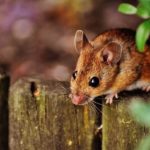By Dennis Welch, Chief Officer

Most people think of a year by seasons; winter, spring, summer and autumn. As park officers, we tend to do the same, except our seasons are different. We have deer, turkey, small game, mushroom, fishing, and the season we are currently in; antler shed hunting season.
Whitetail deer here in Ohio tend to shed their antlers after the last breeding season of the year. This is typically December and January. Late winter into early spring can be a good time to walk the woods looking for these prizes. Although this can be a fun activity on private land, not all public land allows shed hunting. Preservation Parks falls into this category and the park rules reflect this. Recently, I spoke with a couple of visitors walking off-trail at Shale Hollow Park, searching for sheds. As I explained the need for them to stay on the trails and that we do not allow the removal of natural features from our parks, one of them asked a very good question. “The antler is just lying there on the ground, not doing any good, why can’t I take it?” This made me think, it’s easy to see things from a human perspective and how something can benefit us we also need to step back and think smaller.
 When I say think smaller, I mean think about what some of the smallest animals in the forest need to survive. Like every living thing, even the smallest mouse needs food, water and shelter. Food…nutrients; that’s where sheds come in. During some of the harshest times of the winter season, these sheds provide valuable nutrients to a variety of animals. Mice, chipmunks, squirrels, racoons, rabbits, groundhogs, fox, coyote and even deer relish the opportunity to chew on an antler shed. Why would they do such a thing?
When I say think smaller, I mean think about what some of the smallest animals in the forest need to survive. Like every living thing, even the smallest mouse needs food, water and shelter. Food…nutrients; that’s where sheds come in. During some of the harshest times of the winter season, these sheds provide valuable nutrients to a variety of animals. Mice, chipmunks, squirrels, racoons, rabbits, groundhogs, fox, coyote and even deer relish the opportunity to chew on an antler shed. Why would they do such a thing?
Five key nutrients in an antler shed are protein, fat, fiber, calcium and phosphorus. Two of these nutrients are key to the animals that chew on the sheds. Calcium promotes strong bones, teeth formation, supports healthy nerve functions, muscle contraction and milk production. Phosphorus can promote proper organ function, energy storage and can play a key role in growth and development. These much-needed nutrients are available from the sheds at a time when many animals are in their reproductive cycle, several of which give birth in late winter to early spring. As with any animal, proper nutrition is very important during pregnancy and can play a vital role in a newborn’s survival.
 Please don’t get me wrong I enjoy finding a shed just like many of you. However, remember when visiting the parks, you are in the home of many species of animals. From the largest whitetail to the smallest field mouse, we want to protect their basic needs of food, water, and shelter. If you see a shed get a good look at it, even pick it up, but leave it where you found it so other visitors may see it, but more importantly so animals can benefit from it. There is a benefit to “thinking small”.
Please don’t get me wrong I enjoy finding a shed just like many of you. However, remember when visiting the parks, you are in the home of many species of animals. From the largest whitetail to the smallest field mouse, we want to protect their basic needs of food, water, and shelter. If you see a shed get a good look at it, even pick it up, but leave it where you found it so other visitors may see it, but more importantly so animals can benefit from it. There is a benefit to “thinking small”.






